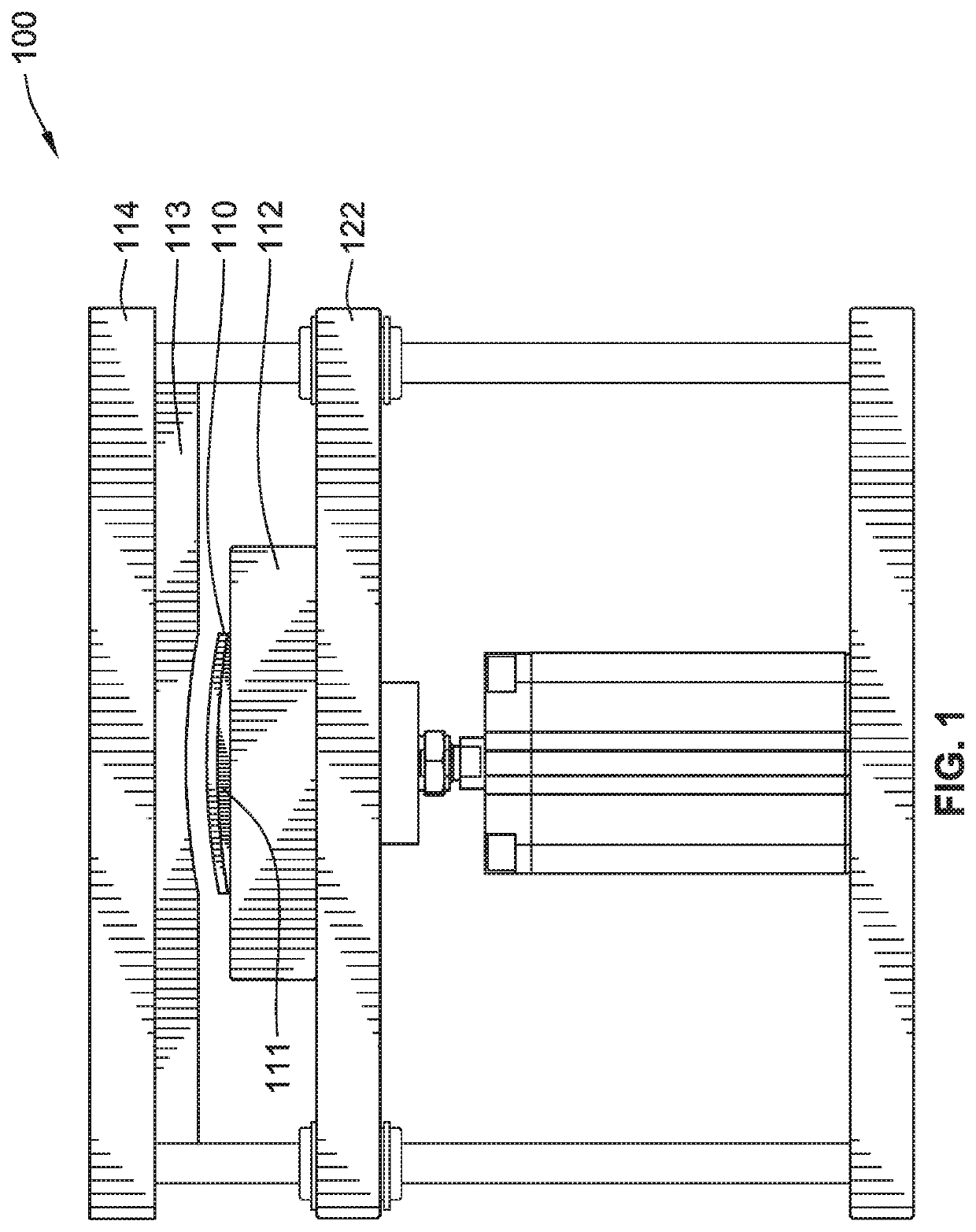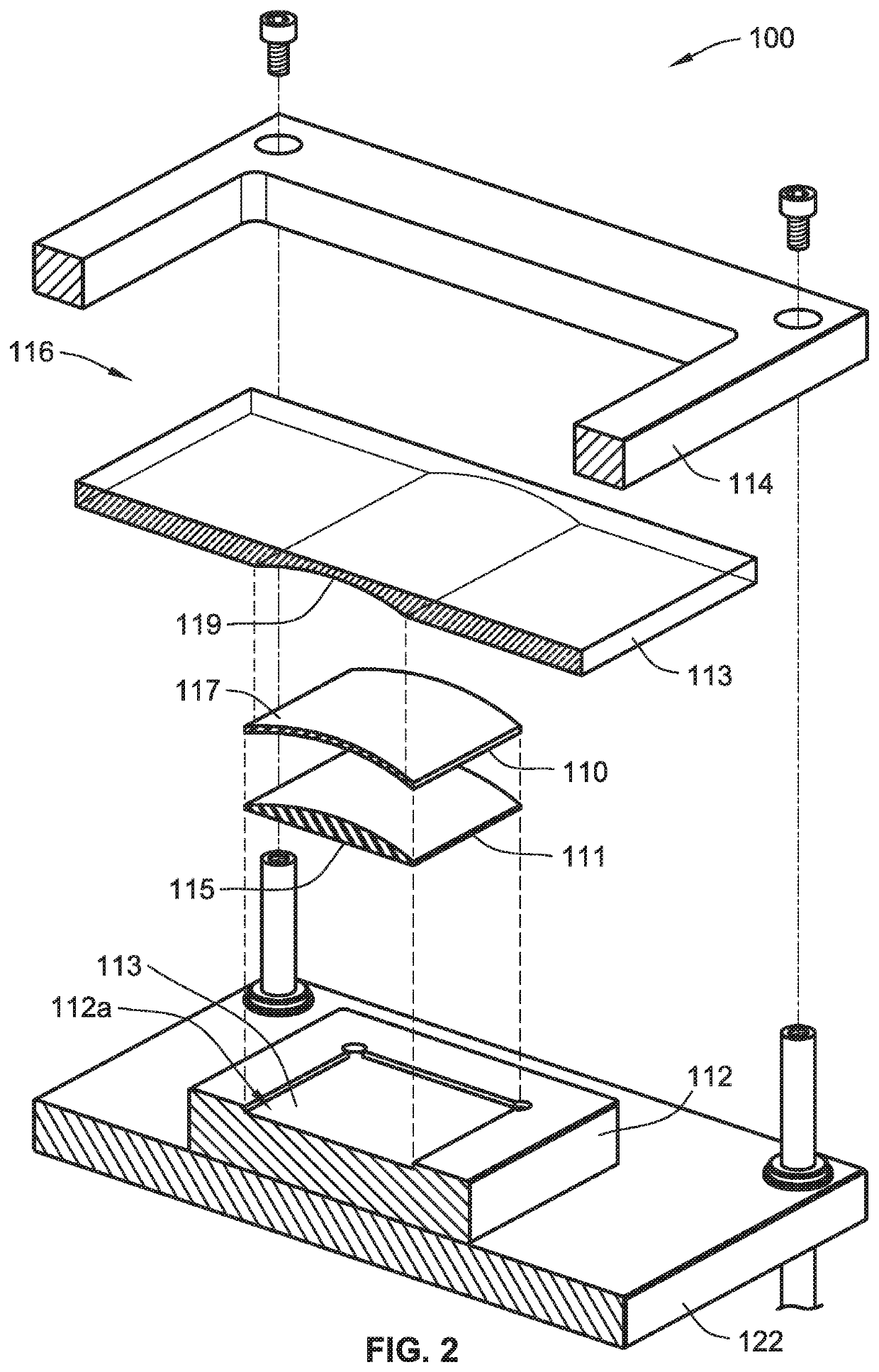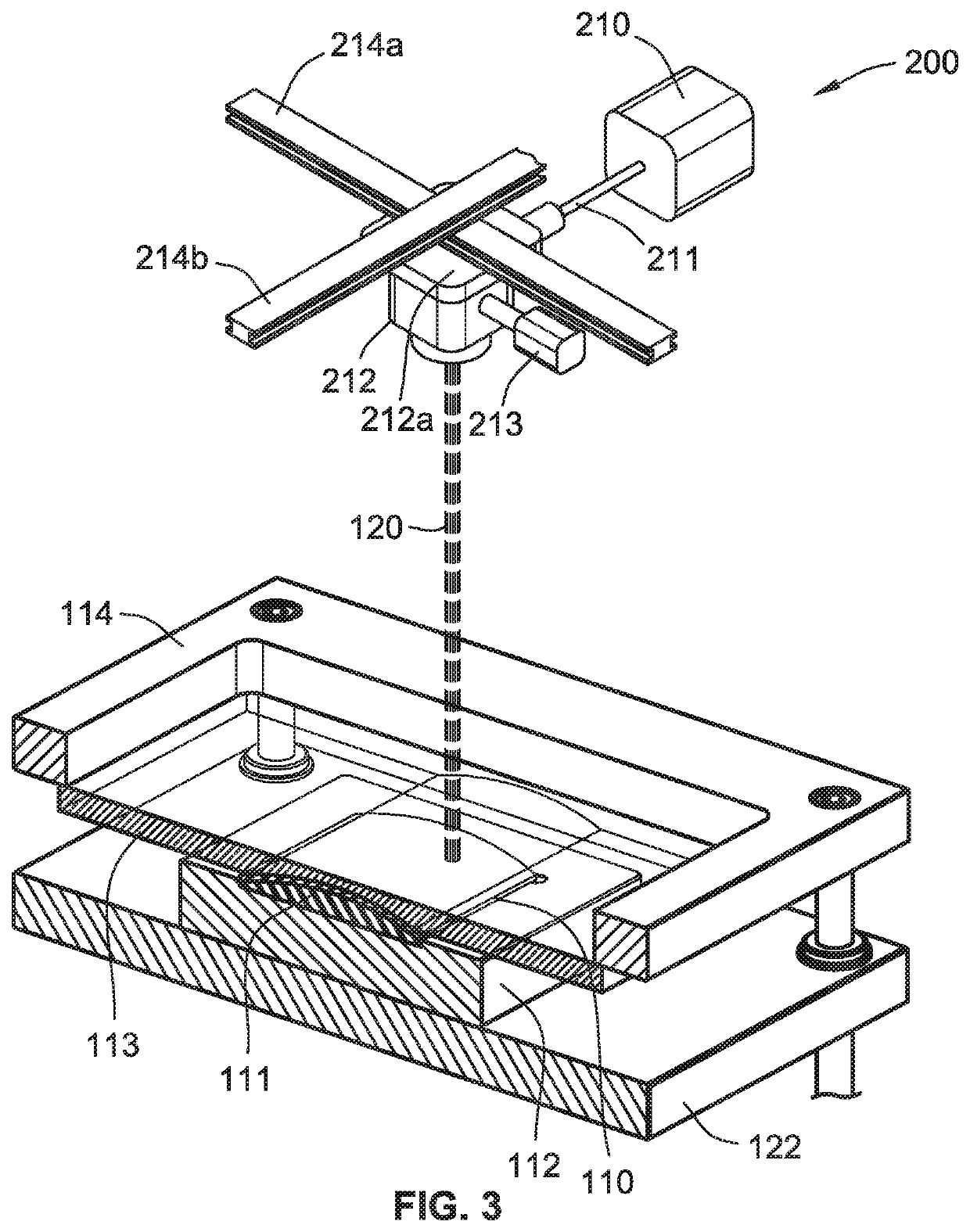Laser welding system and method using machined clamping tool
- Summary
- Abstract
- Description
- Claims
- Application Information
AI Technical Summary
Benefits of technology
Problems solved by technology
Method used
Image
Examples
Embodiment Construction
[0014]Although the present disclosure will be described in connection with certain preferred embodiments, it will be understood that the present disclosure is not limited to those particular embodiments. On the contrary, the present disclosure is intended to cover all alternatives, modifications and equivalent arrangements as may be included within the spirit and scope of invention as defined by the appended claims.
[0015]The laser radiation used in the embodiments disclosed herein can have a wavelength of about 2 microns (e.g., 1940 nm), which is capable of melting thermoplastic materials that do not contain any laser-sensitive additive whatsoever, such as carbon black, to absorb the laser radiation. As used herein, a clamping tool, claiming element, or clamping plate refer to a structure, which is not required to have a flat surface, used for clamping in conjunction with another clamping tool or element or plate. The term plate is not intended to convey that the clamping structure ...
PUM
| Property | Measurement | Unit |
|---|---|---|
| Length | aaaaa | aaaaa |
| Nanoscale particle size | aaaaa | aaaaa |
| Nanoscale particle size | aaaaa | aaaaa |
Abstract
Description
Claims
Application Information
 Login to View More
Login to View More - R&D
- Intellectual Property
- Life Sciences
- Materials
- Tech Scout
- Unparalleled Data Quality
- Higher Quality Content
- 60% Fewer Hallucinations
Browse by: Latest US Patents, China's latest patents, Technical Efficacy Thesaurus, Application Domain, Technology Topic, Popular Technical Reports.
© 2025 PatSnap. All rights reserved.Legal|Privacy policy|Modern Slavery Act Transparency Statement|Sitemap|About US| Contact US: help@patsnap.com



